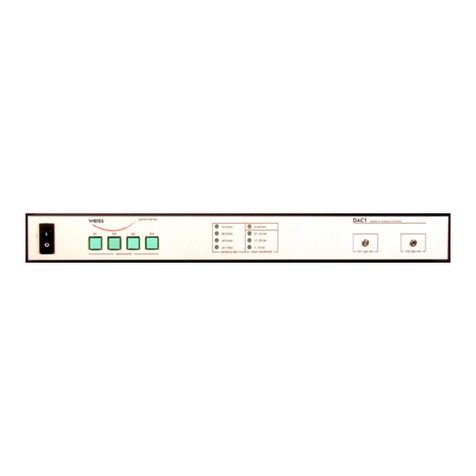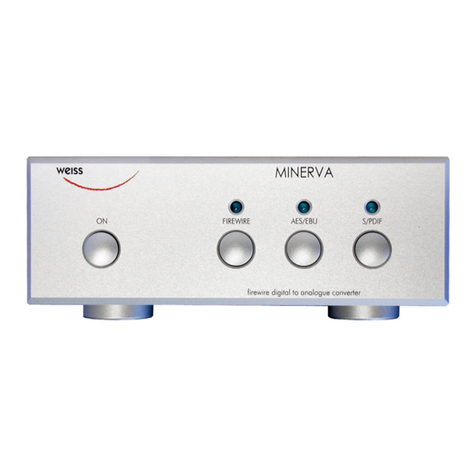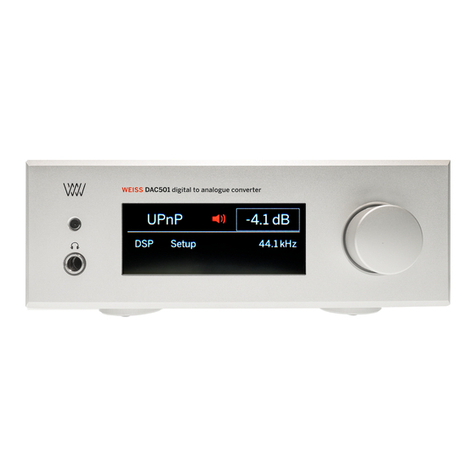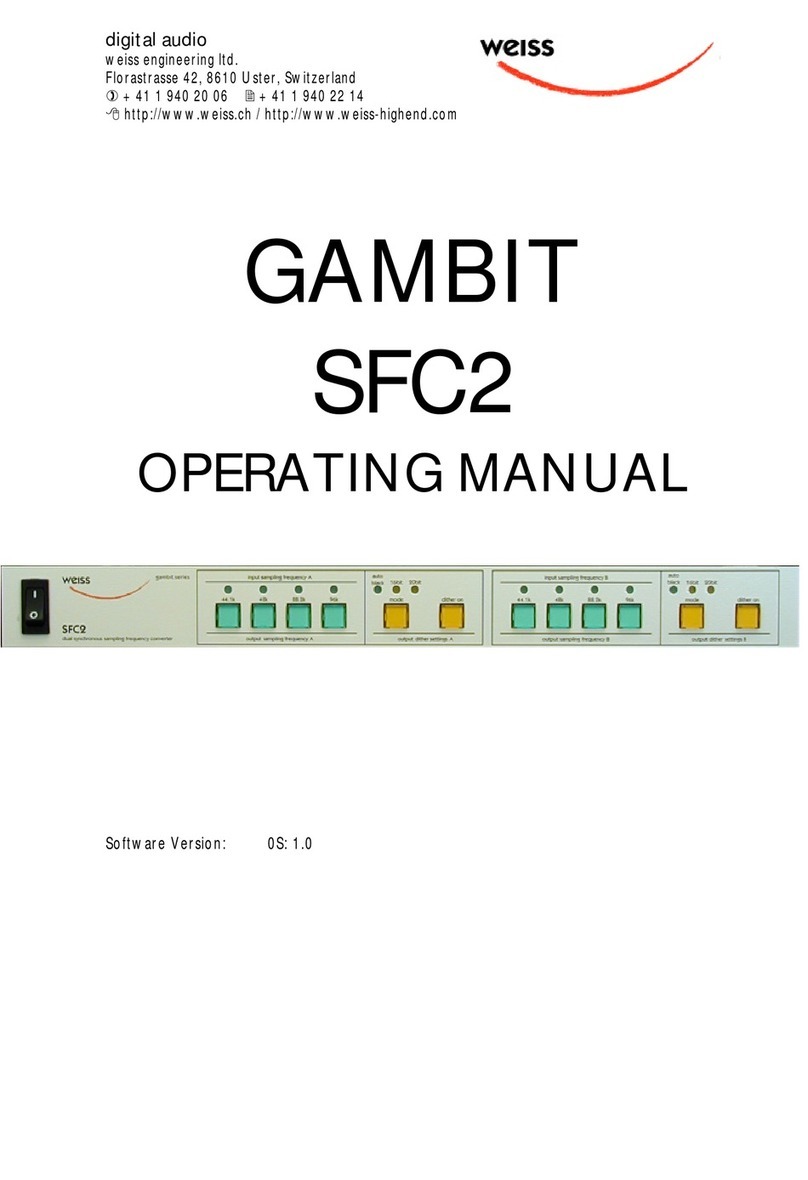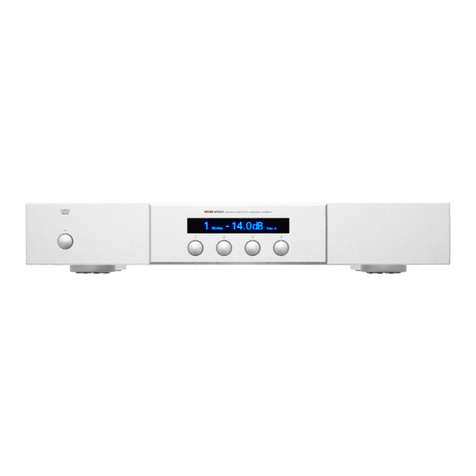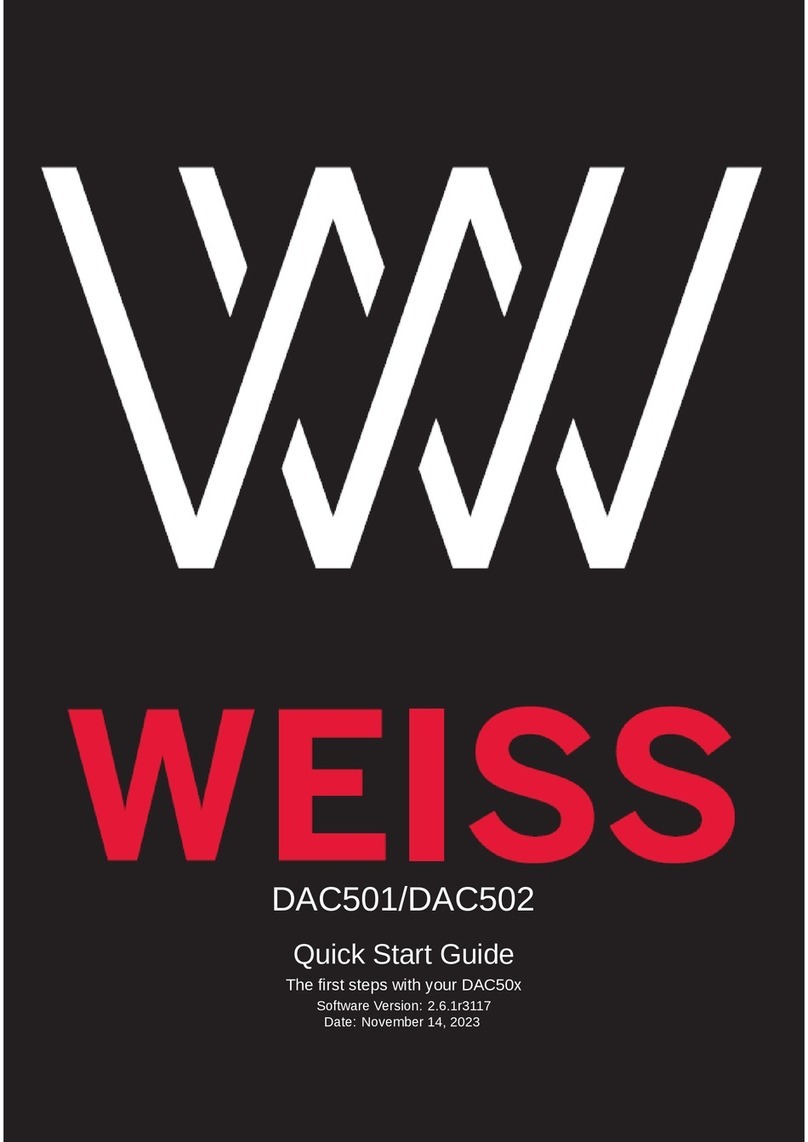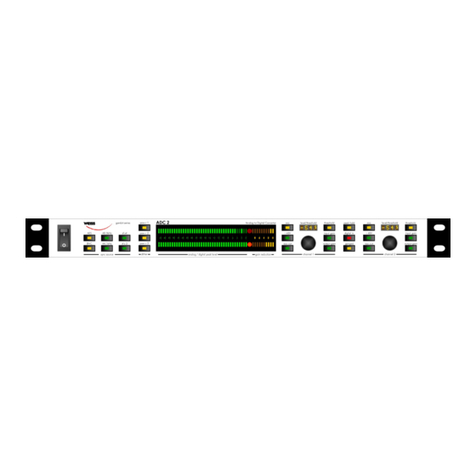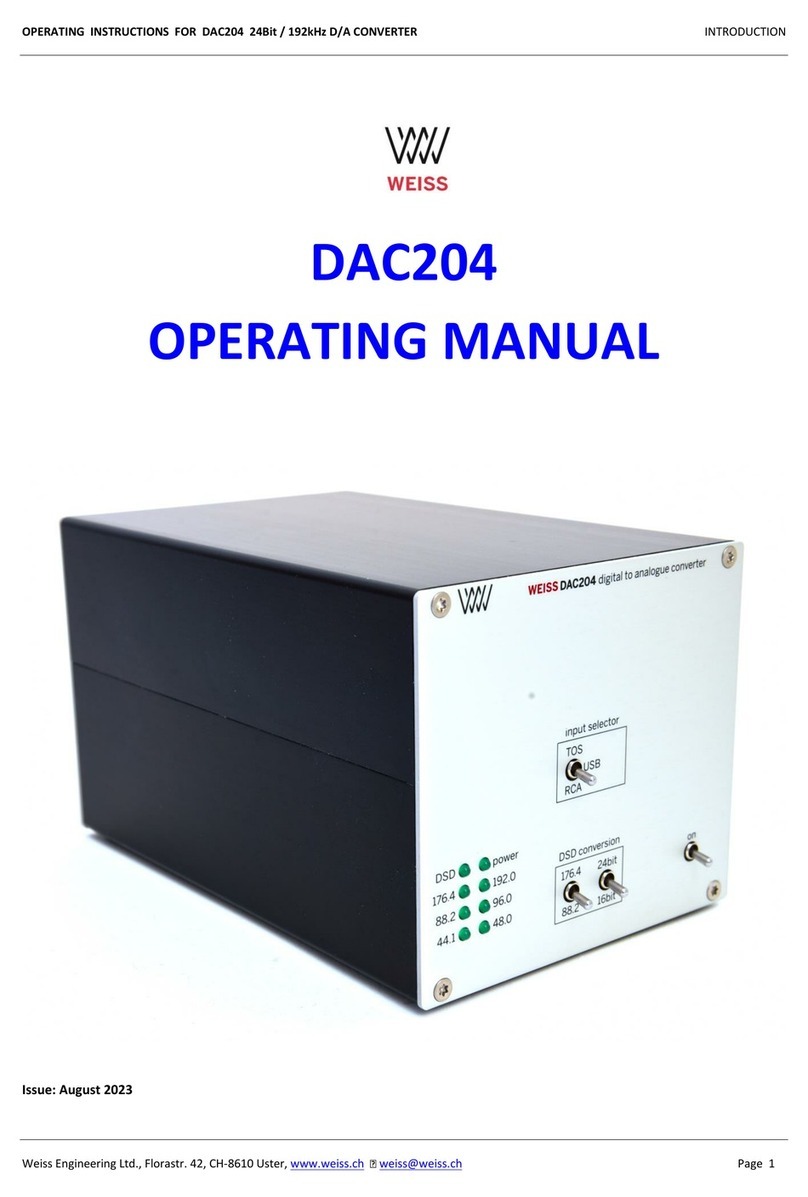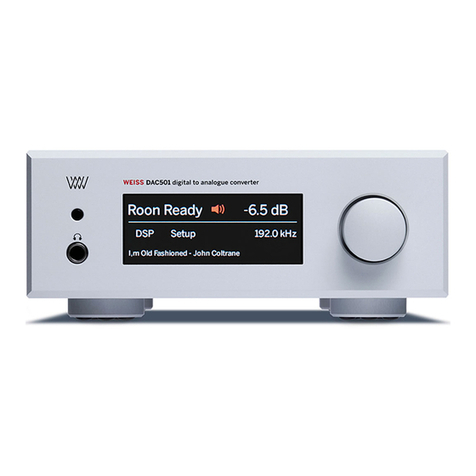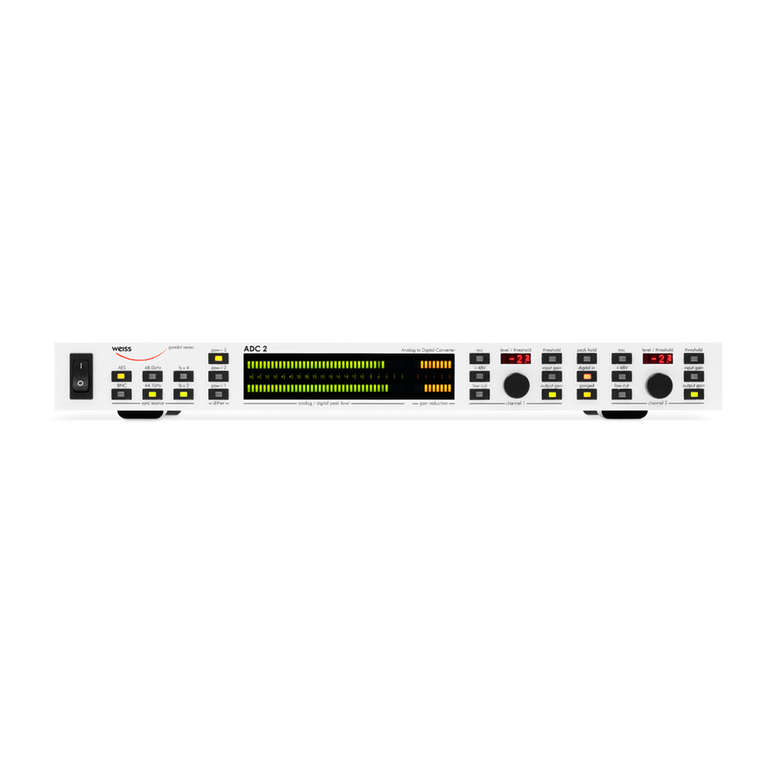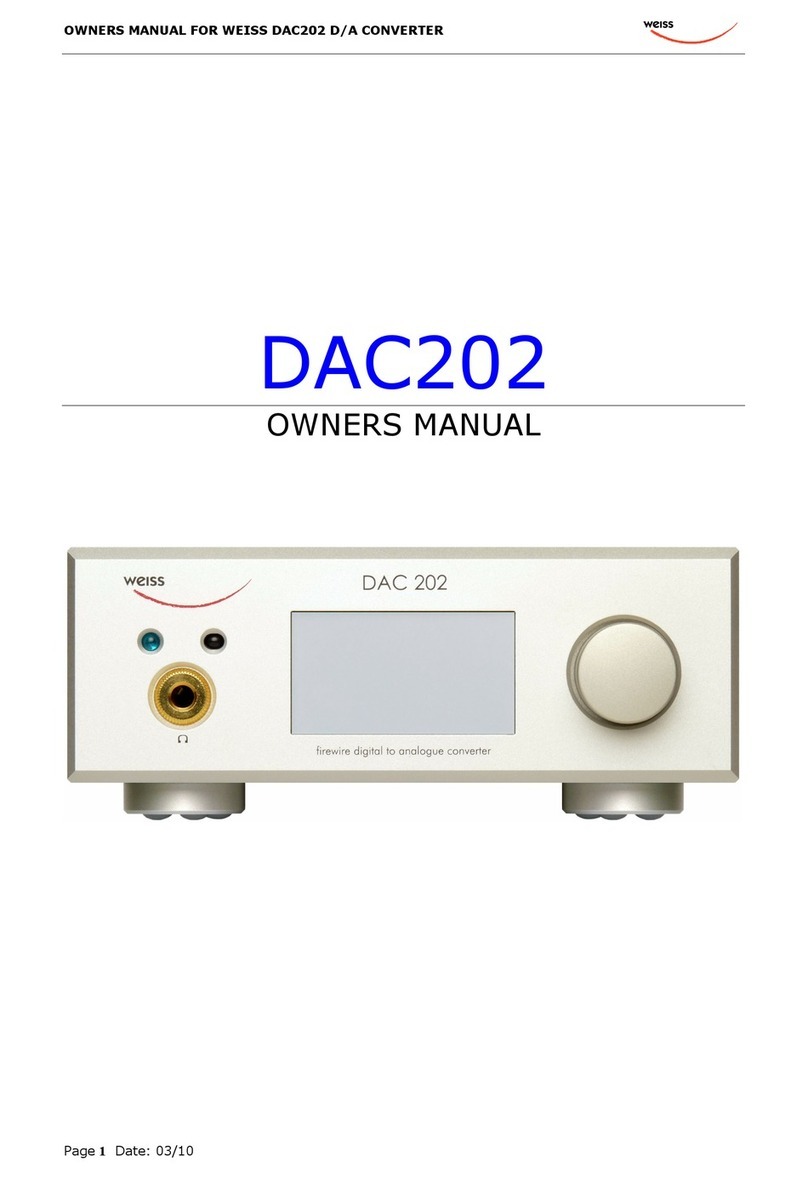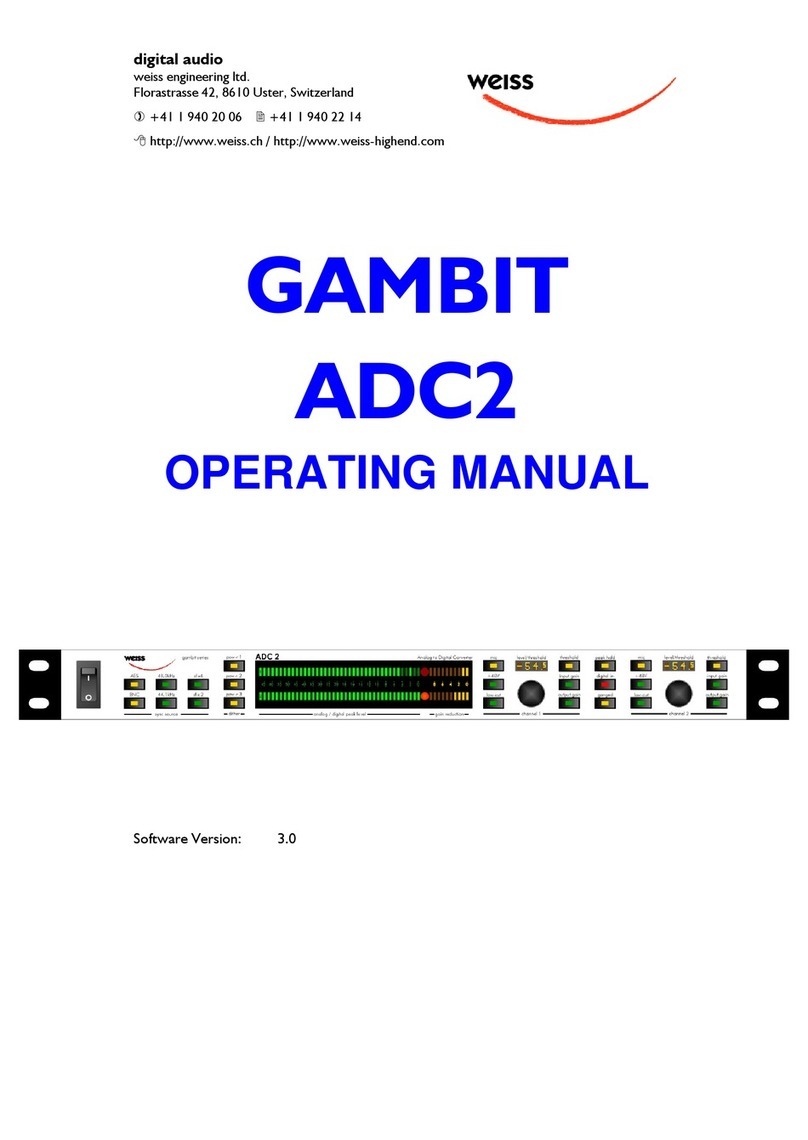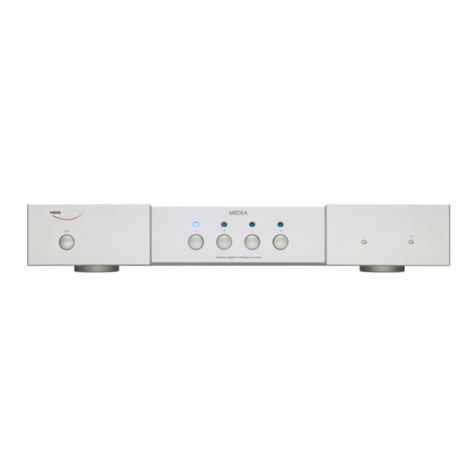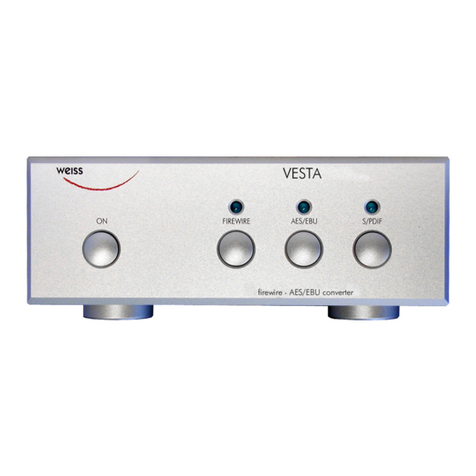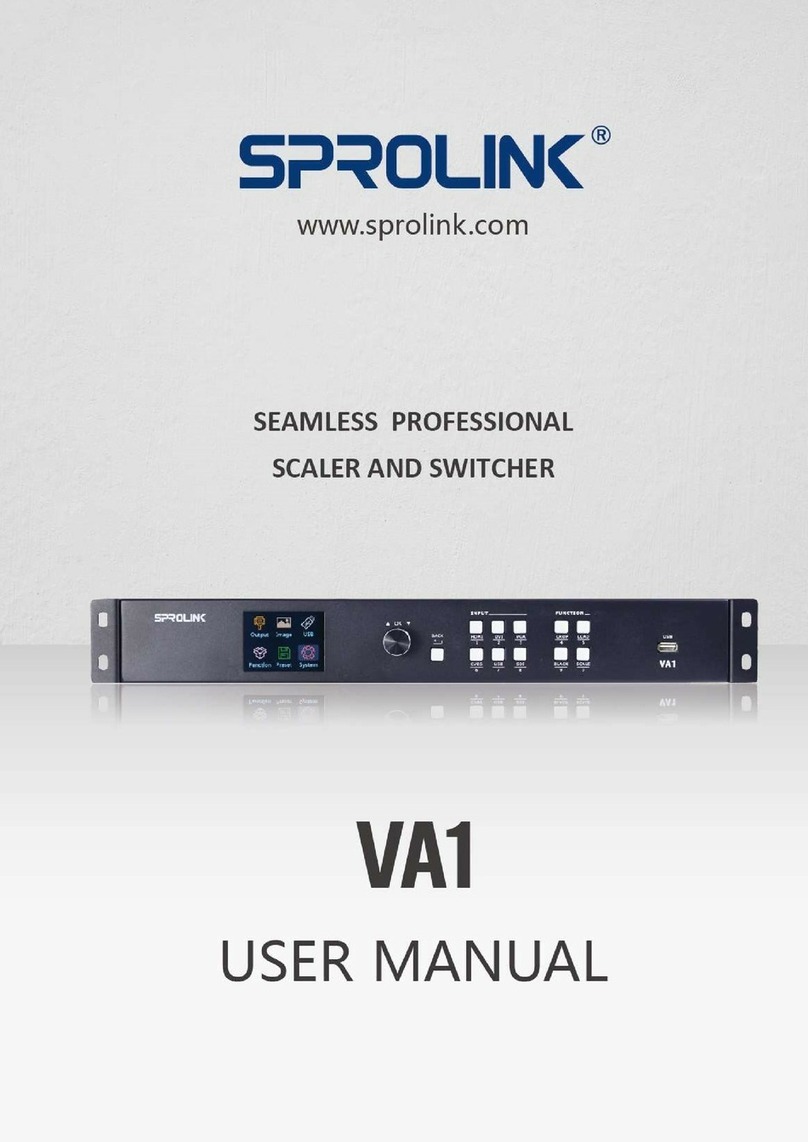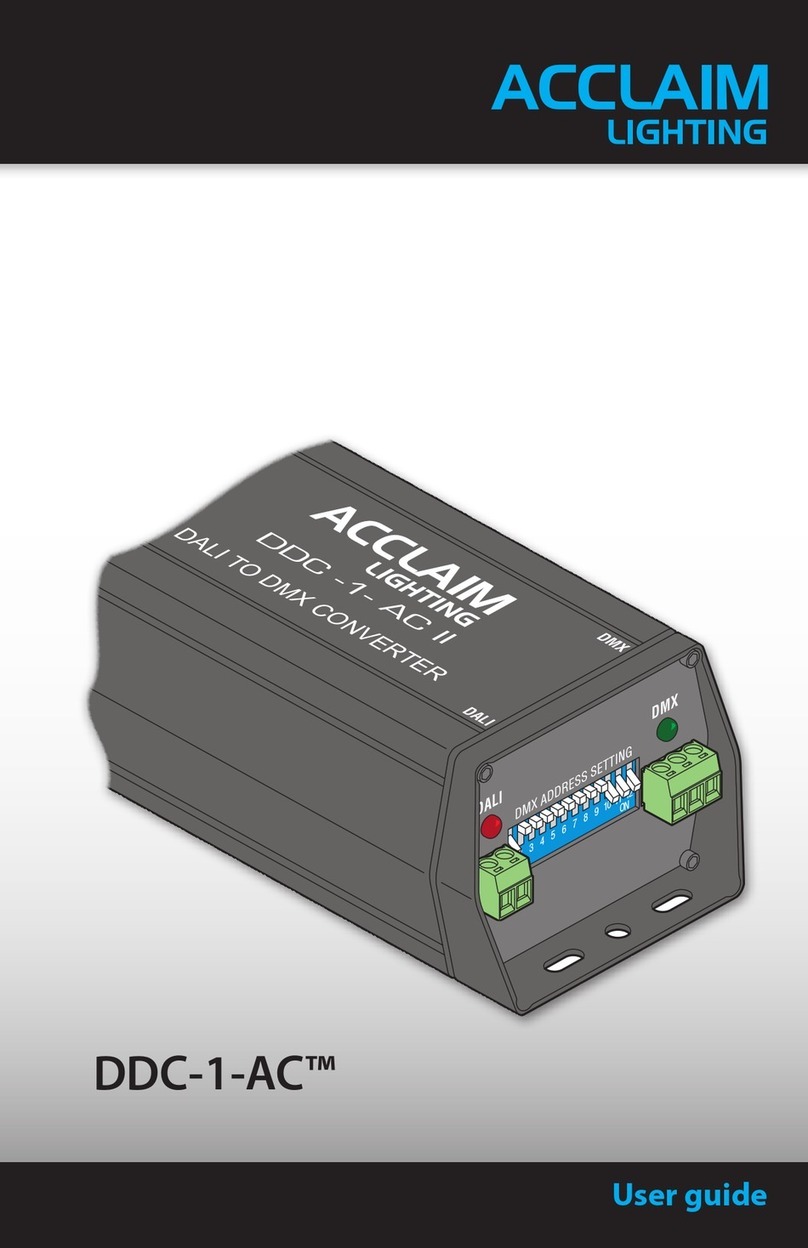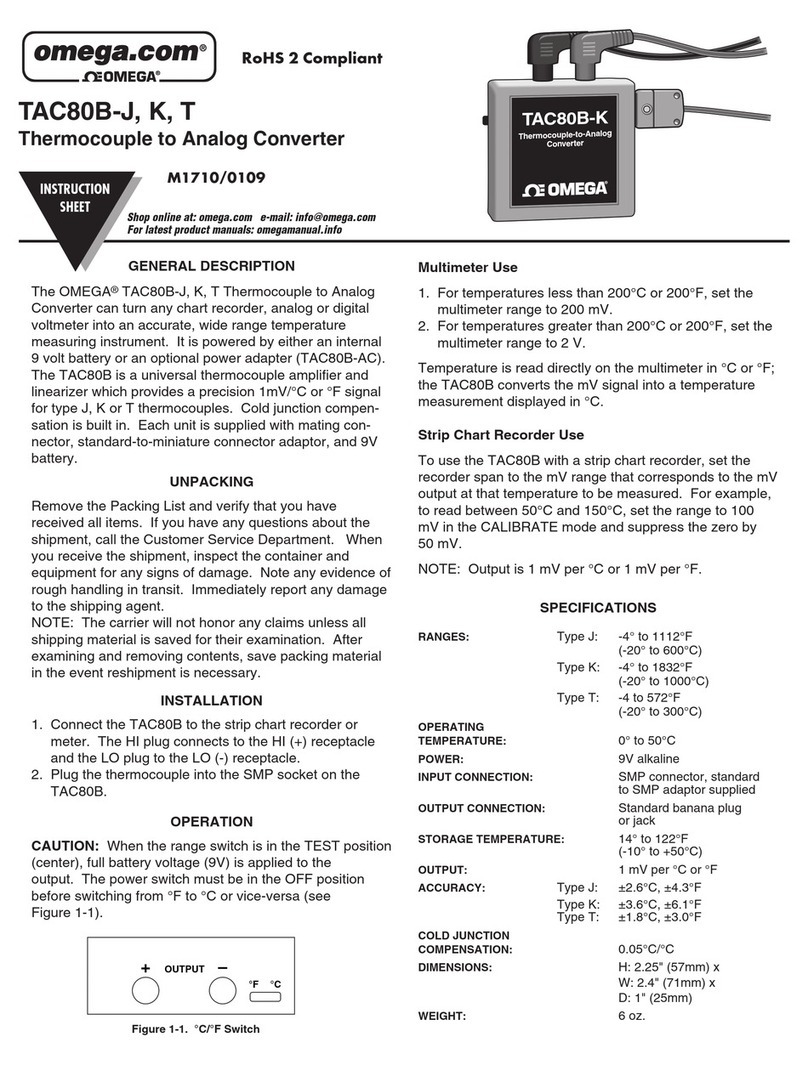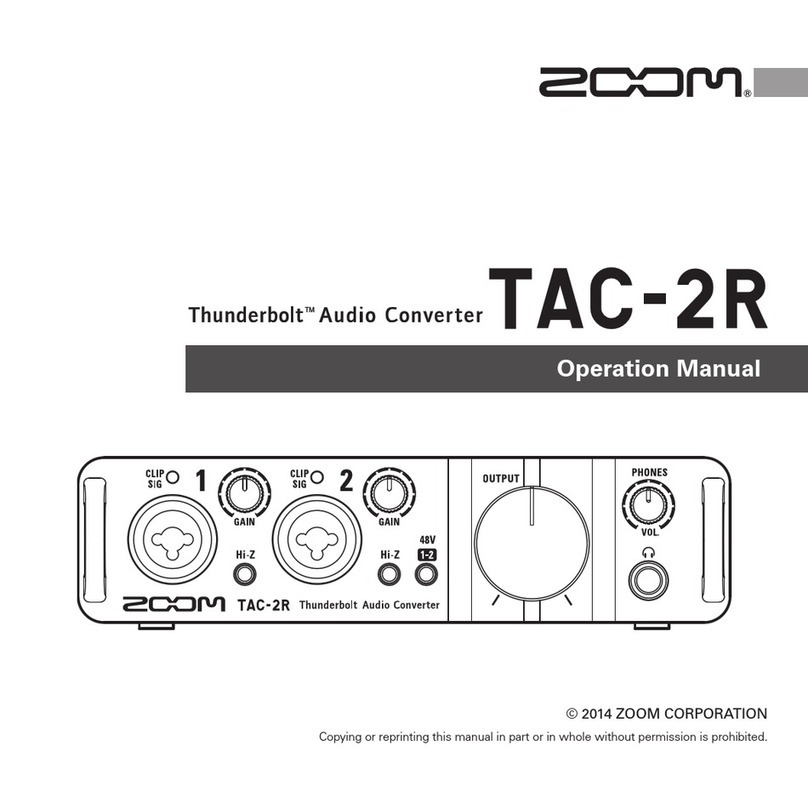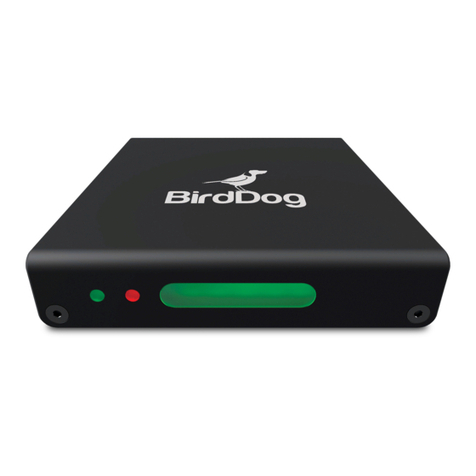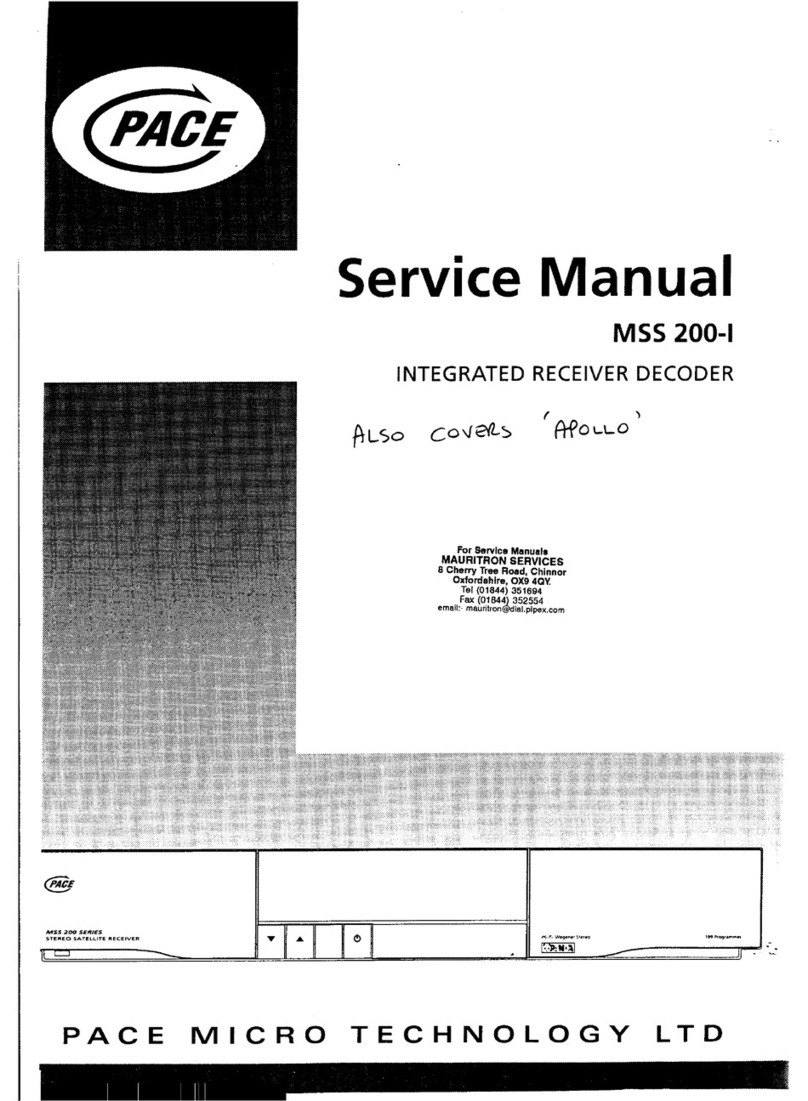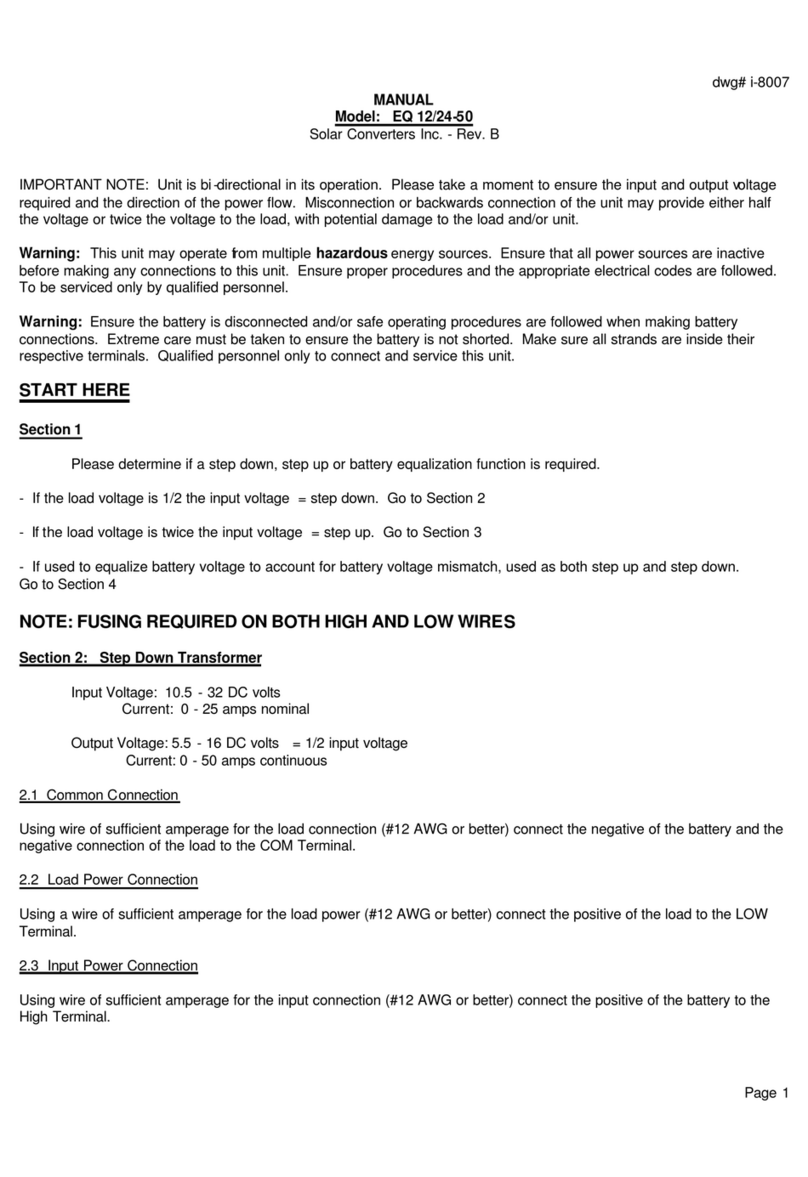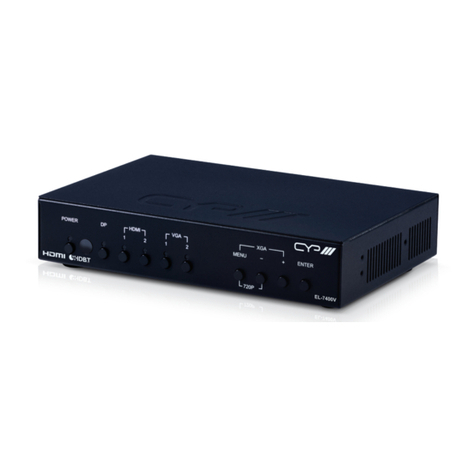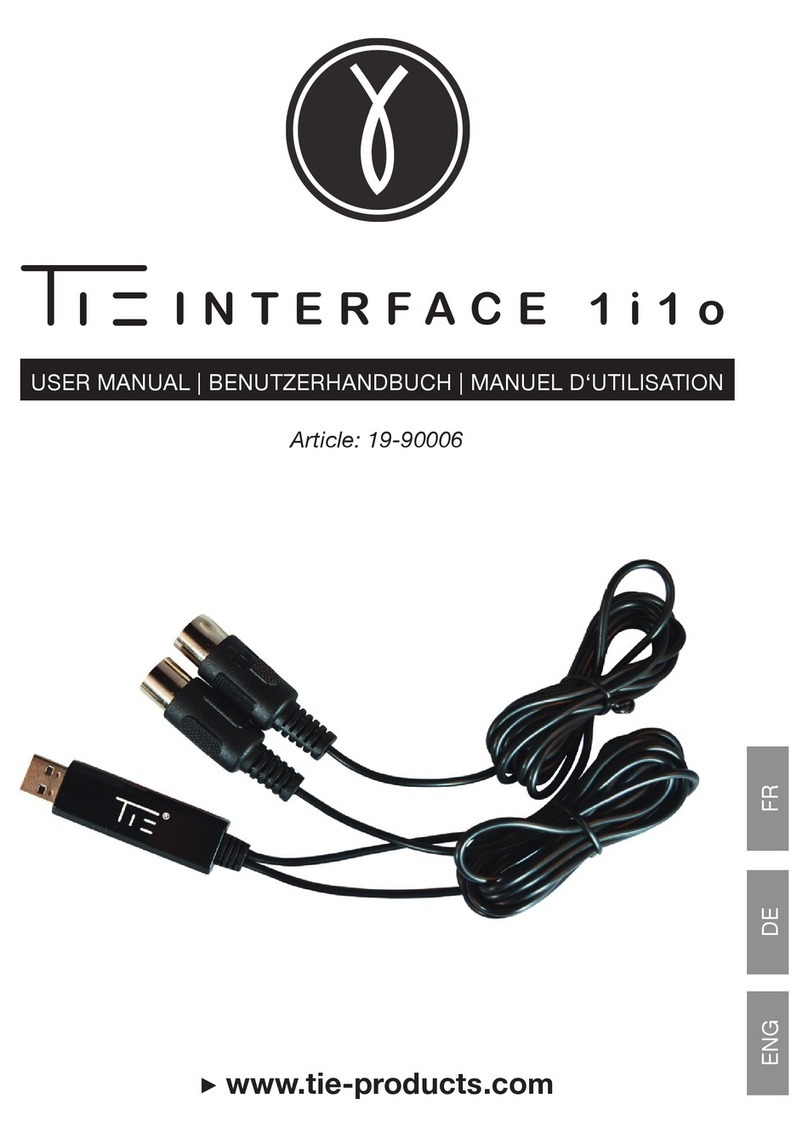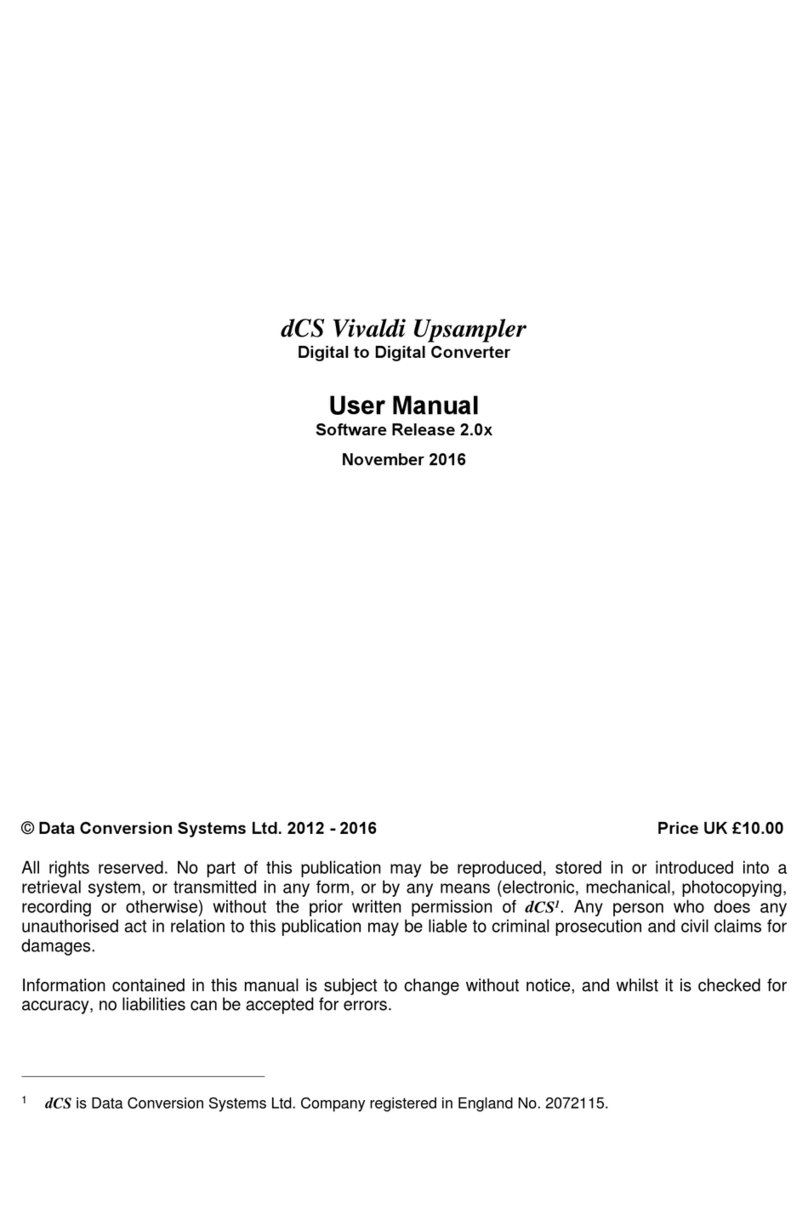OPERATING INSTRUCTIONS FOR GAMBIT DAC1 24Bit / 96kHz D/A CONVERTER INTRODUCTION
Daniel Weiss Engineering Ltd., Florastr. 42, CH-8610 Uster Page 2of 8
)+41 1 940 20 06 2+41 1 940 22 14 8http://www.weiss.ch / http://www.weiss-highend.com
INTRODUCTION
Congratulations on purchasing the Weiss Gambit Series DAC1 D/A Converter !
The DAC1 is a stereo 24 bit / 96khz D/A con-
verter designed with the aim of keeping an abso-
lutely uncompromised audio signal path. Much
detail and thought was spent on the digital input
as well as the analogue output stage. Both have in
common the purest possible approach in audio
design, aspiring for nothing less than excellence.
This is coupled with an ergonomic design that
gives the user immediate access to all necessary
functions, while keeping an uncluttered and thus
easy-to-use front panel. This combination makes
a truly professional D/A converter catering for the
highest expectations.
Features
* Inputs:
There are three digital inputs on XLR con-
nectors, and one on Toslink (optical). The ac-
cepted sampling frequencies are 44.1, 48,
88.2 and 96kHz. For 88.2kHz and 96kHz
sampling frequencies, signals on a single con-
nector are used. Each XLR input is actively
routed to a corresponding XLR digital output,
allowing monitoring at multiple stages in a
digital studio setup.
* Synchronization:
Several signal reclocking schemes are com-
bined for extremely high jitter attenuation,
making the DAC1 virtually immune to jitter
frequencies in the range from fractions of a
Hertz up to tens of kHz.
* Converters:
The correlation technique (using two con-
verters per channel) which was already suc-
cessfully employed in the ADC1 A/D Con-
verter gives the DAC1 an edge over other
D/A converters with equal wordlength and
sampling rate specifications, resulting in im-
proved SNR and THD.
* Outputs:
The discrete Class A outputs have a virtually
zero Ohm output impedance, but can still
drive complex loads without stability prob-
lems. Output levels can be set between -
infinity and +27dBu. The outputs are sym-
metrical, but do not have any sound degrad-
ing servo mechanisms built in. For asymmet-
rical operation only pin 2 of the XLR con-
nector plus ground on pin 1 are used, pin 3
must be left open.
* Remote Control:
By hooking up an analog potentiometer or
fader to the remote connector, the output
level can be remote controlled. A stereo po-
tentiometer or fader allows to control the
two channels independently. This level con-
trol happens in the digital domain and is dith-
ered in order to avoid any sound degrading
quantization effects. The input source selec-
tion can also be remote controlled. Four in-
put selection pushbuttons and associated
status LEDs are brought to the remote con-
nector.

